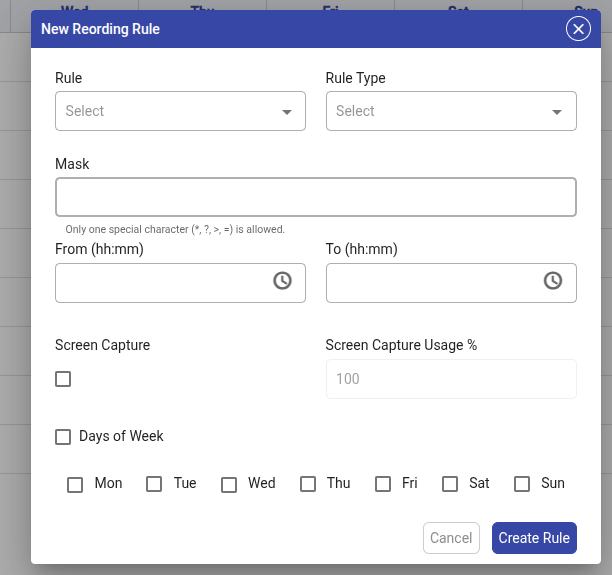User Guide
Introduction
The Expertflow Voice Recording Solution records Cisco Contact center calls, for single & multi-site contact centers with up to 100 concurrent agents. Calls are recorded & stored as individual call legs including call hold, call transfer, and call conference.
Login
Search & Play
Searching a Call
In VRS calls can be searched based on the Start Date, Start Time, End Date, End Time, Dates Within (7days, 15 days, 1 month, and 3 months), CallingNumber, CalledNumber, AgentName, and AgentID. By default when a user logs in on the VRS application, the current date is already selected. The search request can also be customized to show or block specific columns on the user interface. The customized columns are as follows: (Agent ID, Called Number, and Agent Name)
Basic Operation on Calls
Once a call is searched it can be played, downloaded, or archived.
Playing a call
Once a call is searched, it can be played by clicking on the play button.
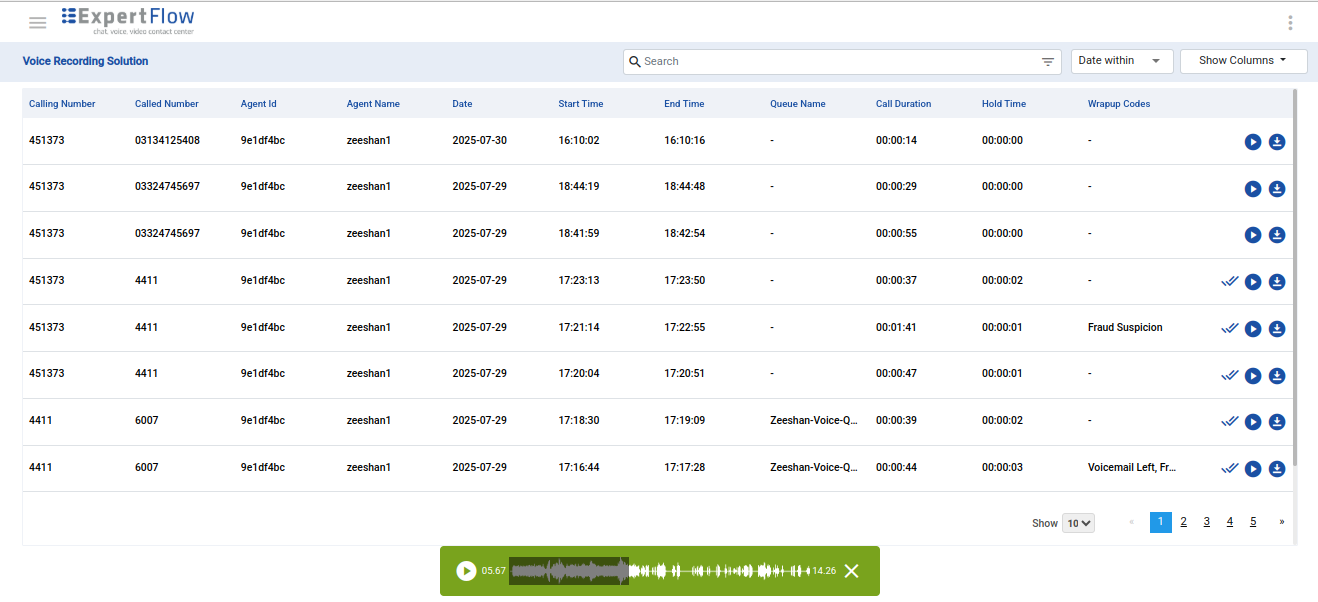
Audio forward and rewind are possible when the audio is selected and played. This can be done by moving the slider forward or backward.
Downloading a call
Once a call is searched it can be downloaded by clicking on the download button.
Multiple-legged calls
A multi-legged call is a type of call that contains more than one leg. It is a single call but has multiple legs. Some of the calls are
Hold/Resume
Direct Transfer
Consult Call
Consult Transfer
Conference Call
Hold/Resume call
A Simple hold/resume call is a call in which a customer calls an Agent, when the call is active the Agent holds the call.

Then it retrieves the call. This process makes two sessions of the call i.e the session before the agent holds the call and the session after the call is resumed.
Direct Transfer
In this case, a customer calls an Agent. The agent after receiving the call then directly transfers the call to the second agent. This is done without any consultation with the second agent.

In this case, two sessions are made as well.
Consult Call
In the case of simple Consult Call scenario, a customer calls to an Agent. The agent receives the call, talks to the customer for a while, and then consult with another Agent, putting the customer on hold. After consulting for a while first agent ends the call with the second agent and then resume the call with the customer before ending the call.
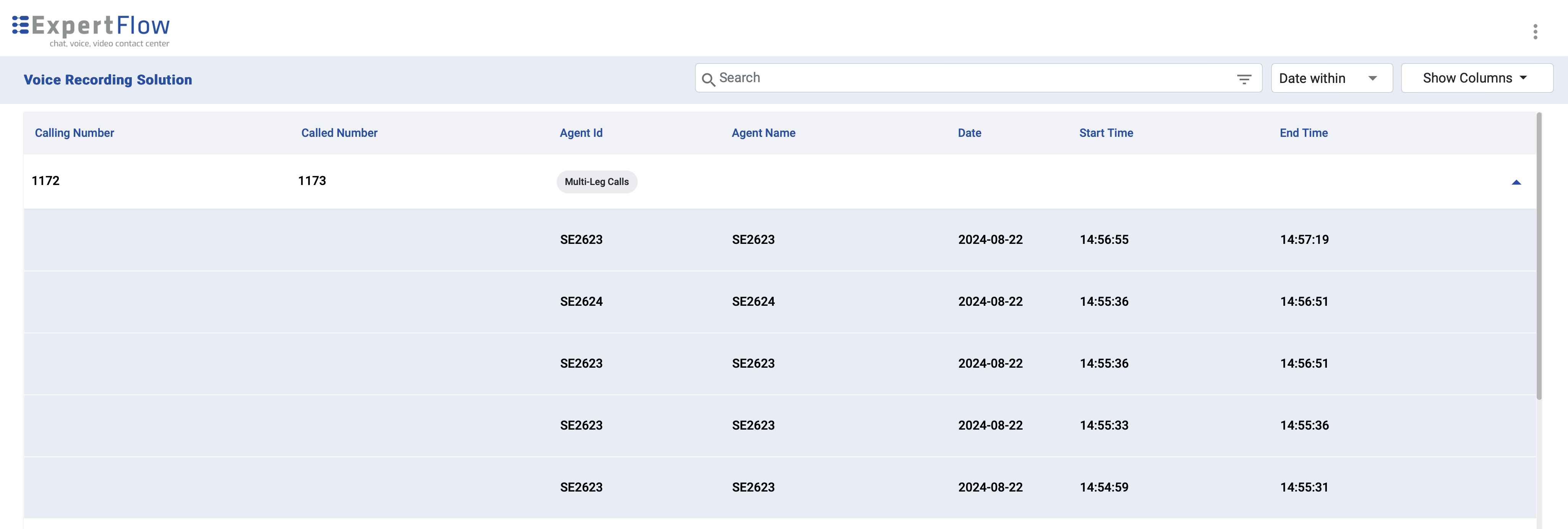
In this case , five sessions are made.
Consult Transfer
In the case of simple Consult Transfer scenario, a customer calls to an Agent and talks to for a while. The agent then makes a consult call to another agent, putting customer on hold. After conversation the first agent transfer the call to the second agent and leaves the call. Now the second agent and customer talks to each other before ending the call.
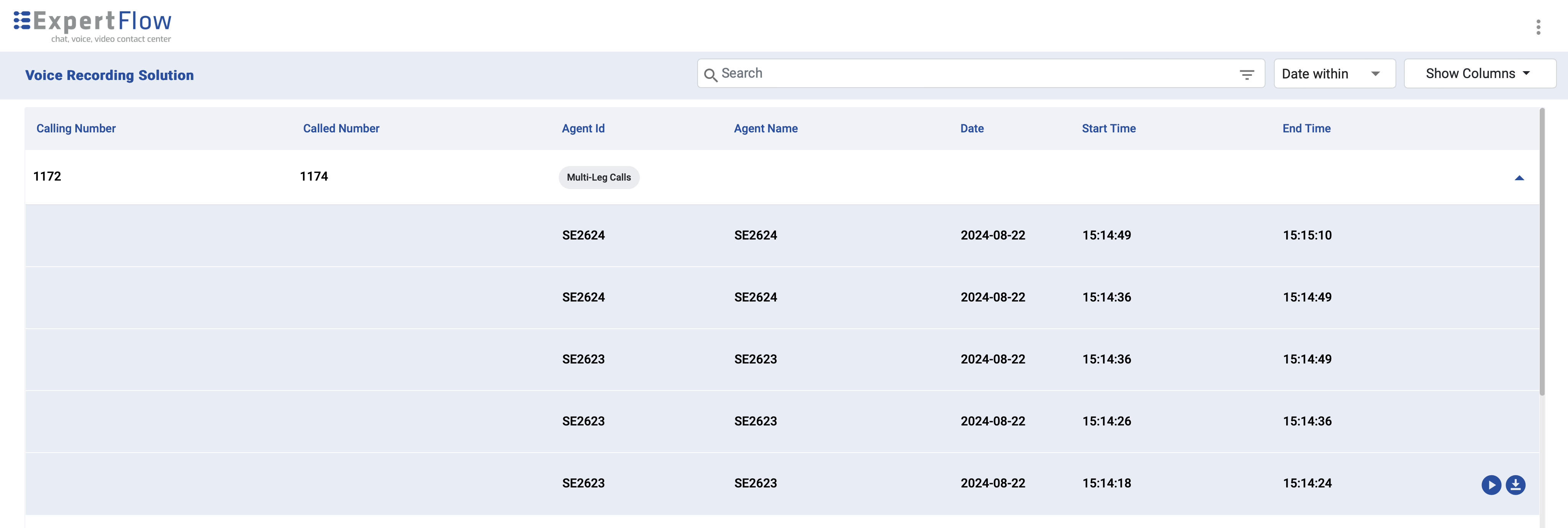
In this case, five sessions are made.
Conference Call
In the case, a customer calls to an Agent and talks. This agent makes a consult call to another agent putting the customer on hold. After talking to the second agent, the first agent initiates a conference call. Now all three participants are in the call. This call goes and later ends.
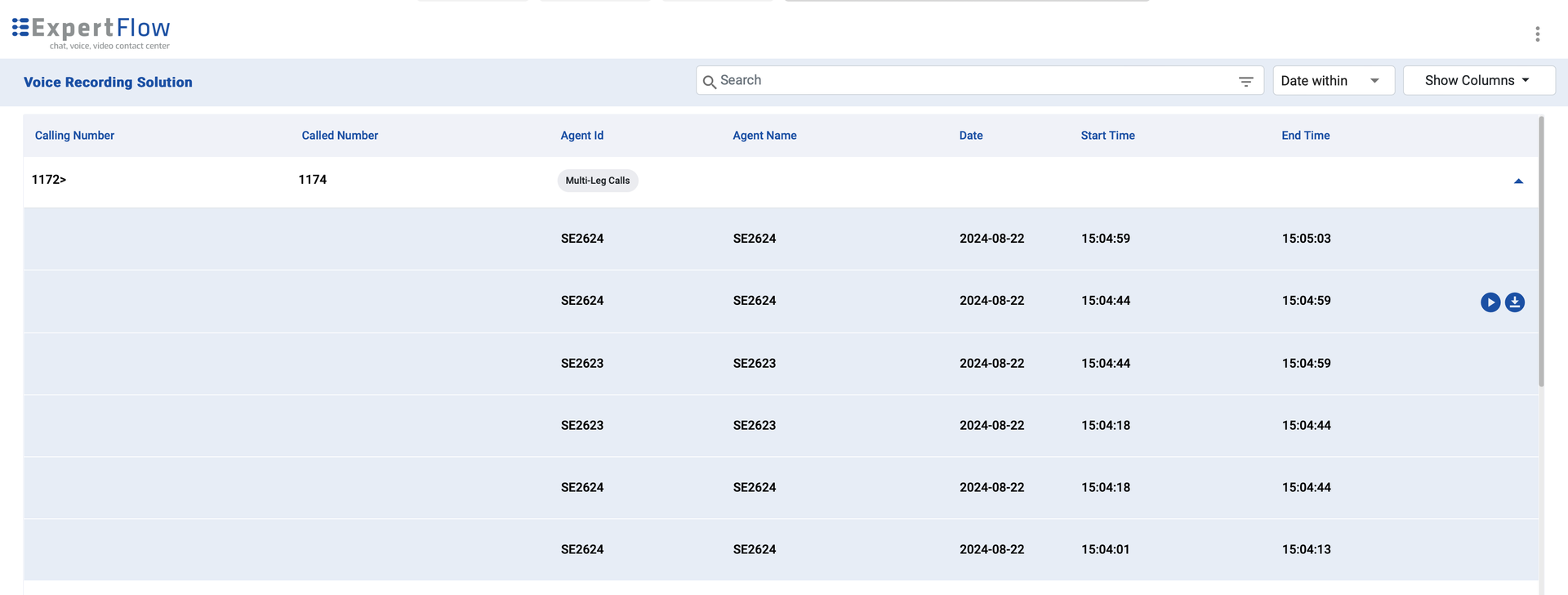
In this case, Six legs are made.
Archival Service
The Archival Service in Voice Recording Solution responsible for managing long-term storage of recording files that accumulate over time and consume significant disk space. It supports two operational modes to offer flexibility in storage management .
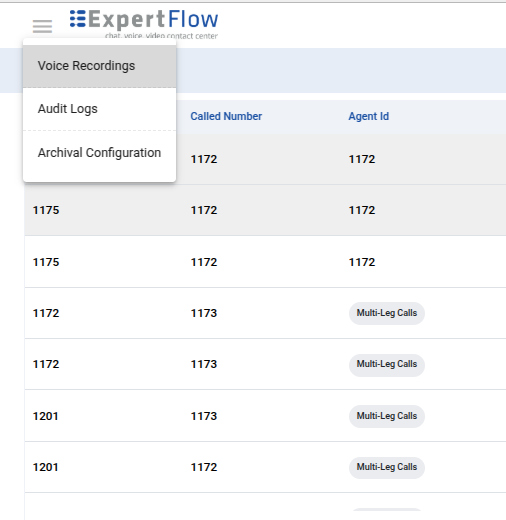
Archive Only:
This mode functions as the original archival service. It uploads older recording files to a designated remote server for long-term storage and deletes them from the local server after a successful transfer. These files will be displayed in a greyed-out format on the frontend, and their play or download options will be disabled.
The archival is controlled manually based on the number of days set in the configuration. For instance, if in "Archive Only" the number of days is set to 2, all recordings older than 2 days will be archived, while the latest 2 days will remain untouched.
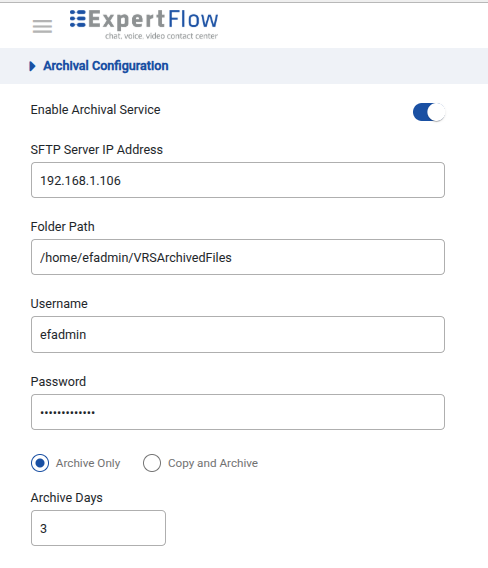
Copy and Archive:
In this mode, the service copies the recording files to the remote archival server based on the copy time configured but it does not delete them immediately from the local server.
Instead, the deletion (purge) of local files is handled separately, based on the "Purge After X Days" setting. and the recordings older than the purge days set in the archival configuration This allows organizations to retain local access to recent files for a defined period even after they’ve been copied to the archival server.
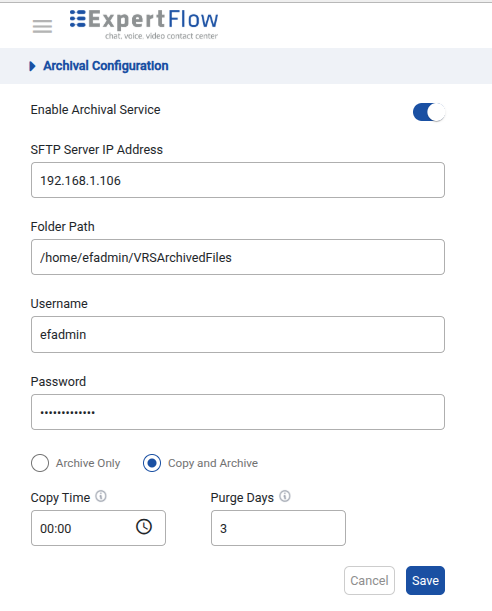
Stream Deletion
Streams are created once the files are recorded on the server. These streams are incomplete chunks of complete recording files, which are temporarily stored at a place to be mixed to become one meaningful conversation. Once these streams are mixed and stored in the session directory, there is no further use for them and they occupy space. Hence, it is important to get rid of these files. Stream deletion plays its part in the removal of unnecessary stream files which has no further purpose to serve. These stream deletion services can also be set manually. We can set the number of days before which all the files will be deleted.
Pause and Resume Recording for Compliance:
Enhance security and achieve PCI DSS compliance with the Pause and Resume Recording feature. Agents can temporarily pause recordings to prevent storing sensitive customer information, ensuring data privacy. Controlled via dedicated APIs, this feature allows real-time pause and resume actions. When reviewed in the VRS Interface, muted sections indicate where recordings were paused. Now fully supported for both Cisco and Expertflow Contact Centers, this feature ensures regulatory compliance while maintaining a seamless recording experience.

High Availability for Uninterrupted Recording:
The Voice Recording Solution now supports High Availability (HA) to ensure continuous recording and seamless failover. Two SIP trunks are configured on CUCM in HA mode, directing call events to two VRS servers. If one server becomes unavailable, call traffic automatically switches to the second, preventing disruptions.
To optimize storage, a Replay Server with higher capacity centralizes recordings, with an automated rsync job transferring files from VRS Servers A and B. A configurable retention policy ensures efficient storage management by automatically deleting older recordings from VRS servers after a set period.
Screen Recording for Enhanced Interaction Monitoring;
The Screen Recording feature captures agents’ on-screen activities during customer interactions, providing a comprehensive view of engagements. A Screen Recorder utility installed on the agent’s computer automatically starts recording when a call is accepted in Cisco Finesse and stops when the call ends.
Recordings are securely transferred via SFTP to the VRS Server, where they are linked with call activity logs. Users can access both audio and video recordings within the VRS UI through an intuitive media player, ensuring seamless playback and review.
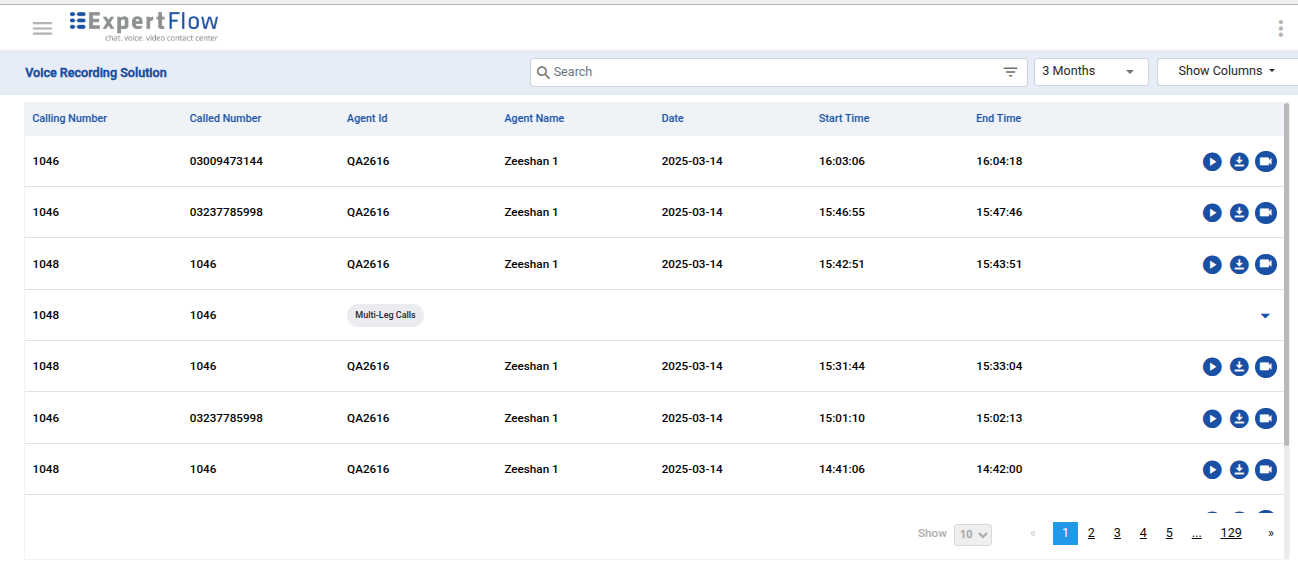
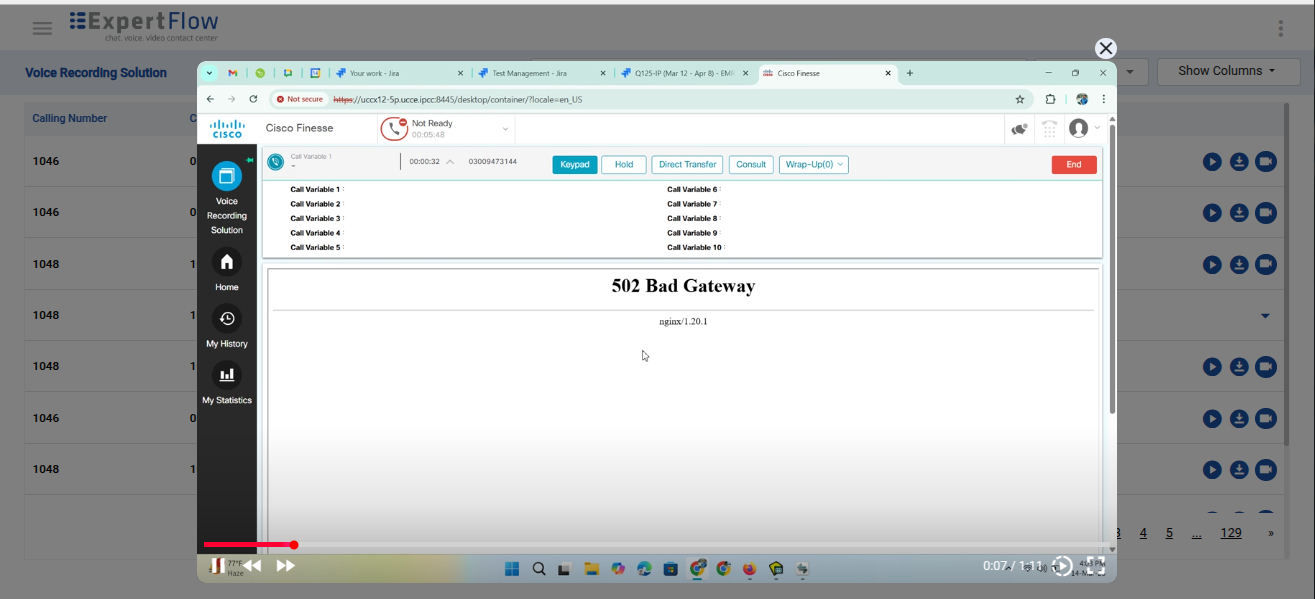
Audit Logs for Security & Compliance:
Improve security monitoring, compliance, and troubleshooting with the Audit Logs feature. This functionality logs all key user activities in the Voice Recording Solution Web Application, including login, logout, playback, and downloads. Each entry captures the date, time, user details, and action status.
A dedicated Audit Logs page provides search and filter options for quick analysis based on action type, username, and timestamp. With pagination controls (10, 25, or 50 entries per page), users can efficiently review and manage logs, ensuring transparency and regulatory compliance.
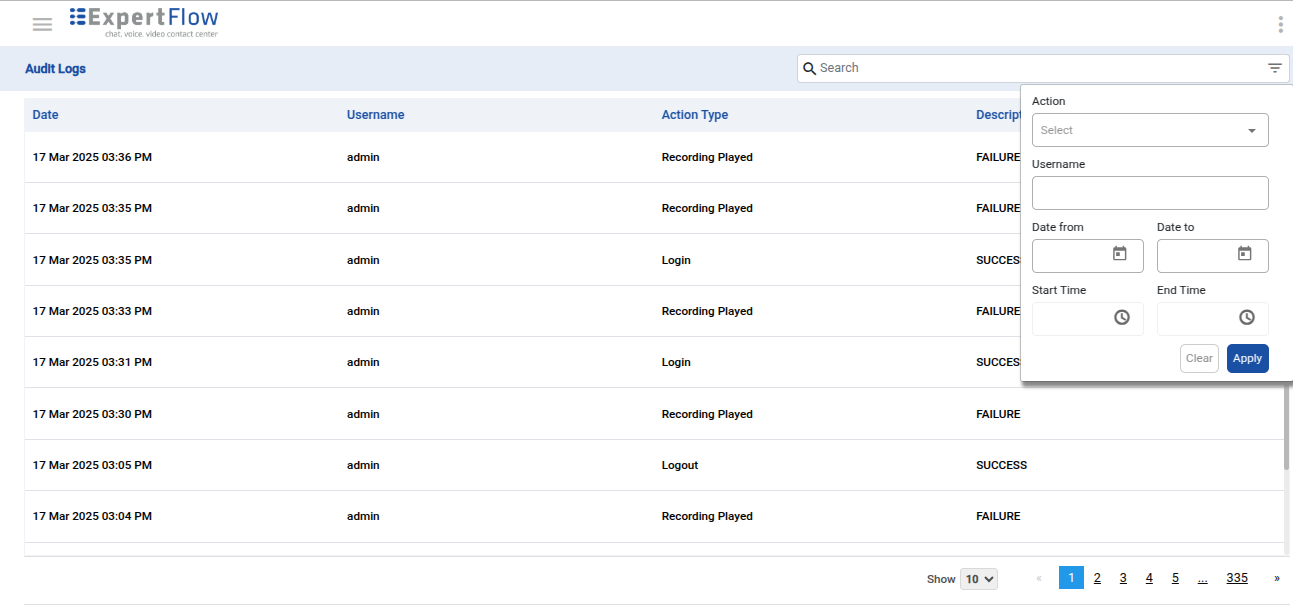
Selective Recording Features
The selective recording mechanism in this system allows fine-grained control over when and what to record based on configurable rules. These rules are defined in the Recording Rules section of the admin panel or database and determine recording behavior based on various call attributes.
Key Features:
Number-Based Filtering
Rules can match calls using calling or called number patterns.
Supports exact numbers, wildcard patterns (e.g., 0300*), or directional masks (e.g., >12345 for calls to a number, or 12345> for calls from a number).
Day-Based Control
Each rule can be enabled for specific days of the week (e.g., Mon-Fri only).
If a rule doesn’t match the current day, it will not be applied, but special logic can reverse the action (see below).
Time-Based Scheduling
Rules are active only during specified time ranges (e.g., 09:00 to 17:00).
Outside the defined time window, the system can behave inversely based on the rule_action.
Rule Action (Recording Logic)
Two primary actions:
"RECORD": Calls should be recorded.
"DO NOT RECORD": Calls should NOT be recorded.
Smart Inversion Handling:
If a rule is invalid due to day/time mismatch:
"RECORD" becomes DO NOT RECORD (i.e., do not record outside allowed time/day).
"DO NOT RECORD" becomes RECORD (i.e., record if it's outside restricted hours).
Priority-Based Rule Resolution
If multiple rules match, the one with the high priority (top in the list) is applied.
Ensures consistent and predictable behavior even in complex setups.
Screen Capture Toggle
Each rule can also define whether screen capture is enabled during the call.
Controlled independently of audio recording.
How It Works
When a call starts, the system:
Checks for rules matching the caller/callee numbers.
Filters rules by the current day and time.
Applies the rule with the highest priority.
Returns a decision:
recordAudio = true / false
captureScreen = true / false
Below is the list of Recording Rules:
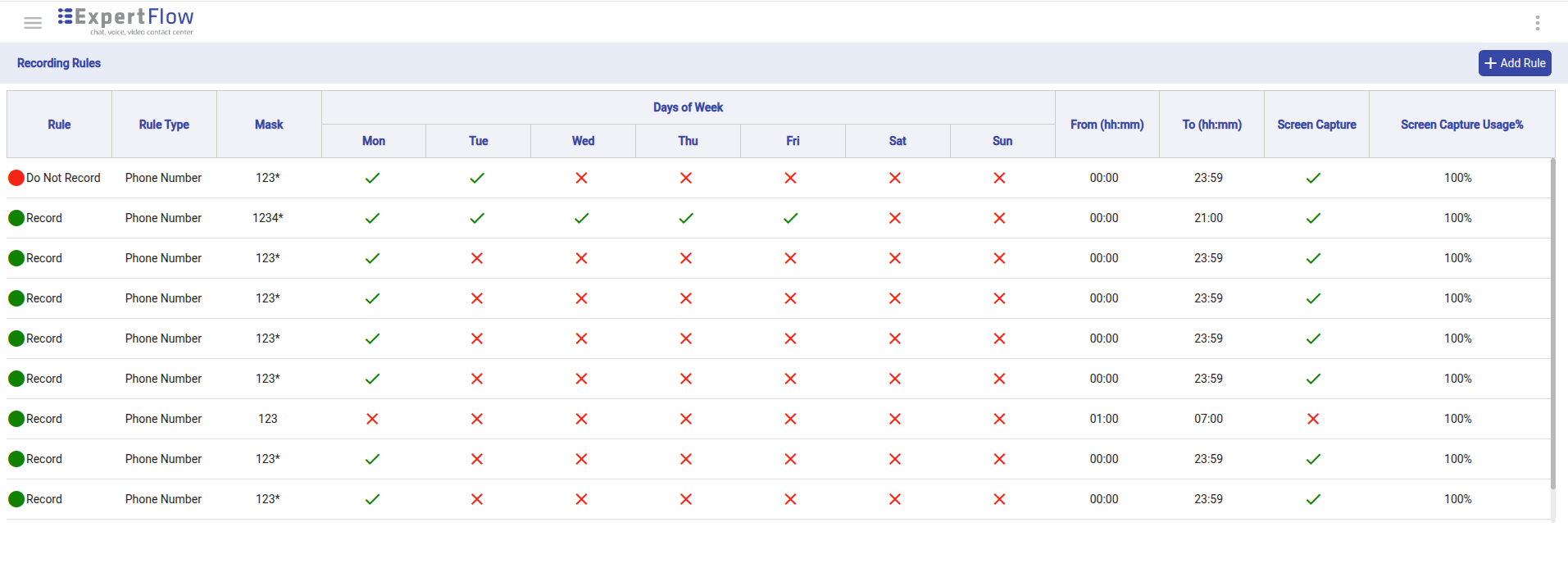
And here is the Rule Creation window with multiple options being available both in drop-down and box selection
